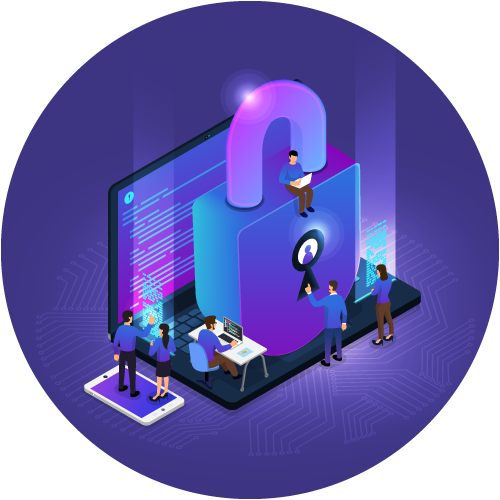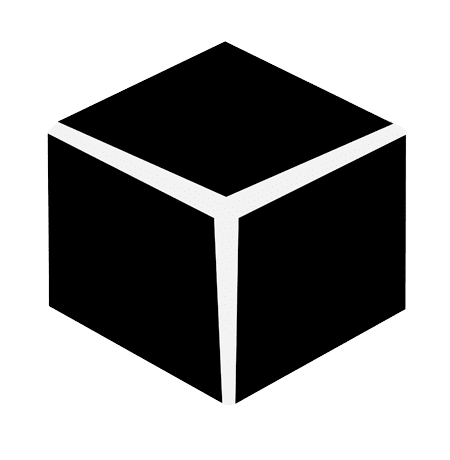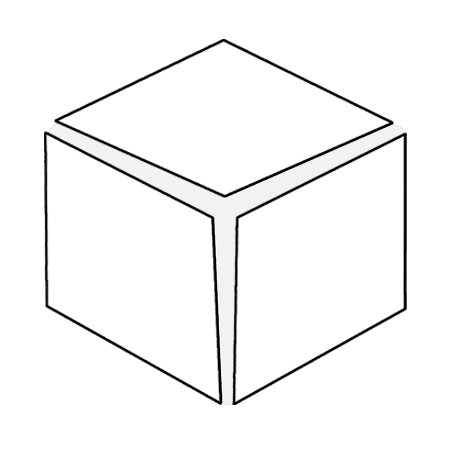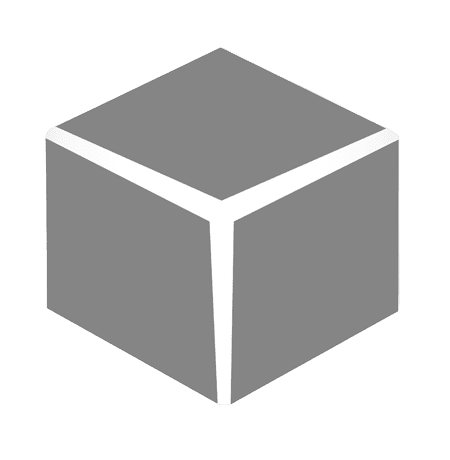Web Application Penetration Testing
Web application penetration testing helps strengthen your web applications against
emerging cybersecurity threats.
Don’t wait for the next attack – prevention is possible.
0K
0K
0K
0Μ
Find and mitigate every single vulnerability in your web applications with Logisek
Web applications are at the heart of business success. But they’re also prime targets for cybercriminals. This is why penetration testing for these applications isn’t just a luxury—it’s essential.
At Logisek, we don’t just offer penetration testing; we tailor-make our services to proactively evaluate your apps. Our mission? Finding vulnerabilities—those tricky weak spots that can expose corporate data or even shut down your apps for a long stretch. Such scenarios can tarnish your company’s reputation and potentially dissolve the hard-earned trust of your customers.
Our seasoned security team doesn’t just specialize; they excel in performing in-depth penetration tests on web applications.
But it’s not all about finding the gaps. We’re on a mission to help your business identify and tackle these security loopholes, cutting down the risks you grapple with.
Web Application Assessments
Web applications have evolved into the lifeblood of modern software. The last decade witnessed an immense tilt towards web and cloud platforms like SaaS, PaaS, and IaaS. As these solutions deeply infiltrating themselves into every corner of business operations, it’s no surprise that web application assessments have become our top service request.
Boasting nearly two decades in the field, Logisek isn’t just experienced; we’re expertly positioned to yield unmatched results.
Since we planted our roots in 2008, our seasoned Logisek crew hasn’t just skimmed the surface. We’ve dived deep, auditing countless web applications across an impressive spread of 29 programming languages. Our expertise runs the gamut—from emerging tech standouts like Go, Sxal, and Elixir to well-known standards such as Java, Ruby, Python, PHP, C#, R, VisualForce, Apex, T-SQL, Lua, and Tcl. We’ve navigated virtually every MVC framework you can think of and even some technologies that are best left to fall of the tech map entirely.
Equipped with this deep and wide-ranging experience, we stand ready to scrutinize any web application. We aim to spotlight and address the highest-risk vulnerabilities lurking in your code, ensuring your digital assets stay fortified in a tech world that never stops changing.



Web application Top10 vulnerabilities and security assessment methodologies
At Logisek, we provide a thorough web application penetration testing service. This covers evaluations of applications, whether they're developed in-house or sourced from external vendors
Our team conducts penetration tests, using the same tools and techniques that potential attackers might favor. These tests aim to pinpoint vulnerabilities in web applications, APIs, and thick clients.
Following the guidelines from resources like the OWASP Top 10 and the OWASP Testing Guide, we actively pursue and identify a variety of possible security flaws within your applications, including:
Security Assessment Methodologies

At Logisek
we identify and address security vulnerabilities in your web applications, giving you the peace of mind to focus on your core business operations and stay ahead of potential threats.
We primarily use a meticulous manual approach in our web application penetration testing methodology. This enables us to pinpoint vulnerabilities with higher accuracy and exploit them effectively, often uncovering weaknesses that automated analysis tools might overlook.
Moreover, we detect more than just conventional vulnerabilities. We also discover business logic flaws, helping businesses strengthen their applications dependability, increase return on investment (ROI), improve customer experience, prevent data breaches, and maintain application stability. By doing this, we establish a resilient digital environment that fosters your business growth and continuity.
Security Assessment Approaches

Our penetration tests, whether conducted externally or internally without credentials, mirror real-world attack scenarios. In these assessments, our security consultants use the same tools and strategies that an attacker would deploy.
For unauthenticated penetration tests, be it from an external or internal viewpoint, all we need is a list of the systems you’d like to include in the assessment. There’s no need for detailed information about your infrastructure.
It’s worth noting that our unauthenticated penetration tests can be tailored to various tech systems and environments, irrespective of their external or internal nature. Regardless of the specific infrastructure in place, our approach remains unbiased, enabling us to offer insightful advice and practical steps to enhance security across diverse IT landscapes.

This procedure is referred to as internal penetration testing with the use of credentials, wherein the security consultants gains access to the network infrastructure. This method provides them with detailed information and specs usually hidden from potential attackers.
This inside information is pivotal for uncovering vulnerabilities that might otherwise remain unseen.
It’s worth noting that our authenticated penetration tests, whether external or internal in nature, cater to various tech systems and settings. No matter the specific infrastructure you have, our unbiased approach ensures that we offer deep insights and practical suggestions to elevate security across multiple IT landscapes.

Often known as either external or internal, authenticated or unauthenticated penetration testing, this method grants our security consultants limited yet crucial access to sensitive data and a comprehensive view of the system or application’s architecture. They also collaborate closely with a representative from the company’s development team.
As the test unfolds and new control elements emerge, the consultant can seek more details about its functionality from the development team, making the test more pinpointed and efficient.
Importantly, whether it’s an authenticated or unauthenticated test, and irrespective of being internal or external, our testing can adapt to a wide array of tech systems and settings. Our approach doesn’t lean towards any particular infrastructure, ensuring we consistently offer meaningful insights and practical steps to boost security across diverse IT terrains
Our web application blackbox penetration testing methodology
Web application penetration tests conducts in two main ways: with or without credentials. For “BLACKBOX” unauthenticated assessment, we adopt a specific methodology. Here, the security consultant starts the assessment with just a minimal set of information.
In close partnership with your organization, we craft a scope for application security assessments that aligns with your specific objectives and requirements.
Together, we examine your business's security demands, weighing factors like data sensitivity, compliance obligations, industry standards, and your risk threshold. With a deep grasp of your distinct security needs, we fine-tune our testing strategy to provide the most relevant and impactful security assessment for your web applications.
In the initial phase of information gathering, Logisek taps into sophisticated Open-Source Intelligence (OSINT) methods to quietly gather public data. This information, which could be a goldmine for malicious entities, poses potential risks to your organization's security.
Such accessible data isn't just a rich source of insights; it can also reveal unforeseen threats to your business. This data might be sourced from various platforms like search engines, social media, code repositories, forums, and even the hidden depths of the dark web.
By harnessing OSINT techniques, we compile insights on your organization's digital presence, possible weak spots, exposed sensitive details, and other vital data impacting your security stance. Such a foresighted approach lets us identify and address potential vulnerabilities, ensuring your security remains robust and threats are minimized.
At Logisek, we conduct a thorough review of your applications, blending automated tools and hands-on methods, all without requiring credentials. Our aim? To deeply comprehend your organization's potential vulnerabilities.
Using automated tools allows us to efficiently scour and examine your web applications, APIs, and other elements for typical vulnerabilities and misconfigurations. These tools provide a panoramic view of your applications' security status, spotlighting potential areas of concern.
But we don't just rely on automated solutions. We enhance our review by applying manual tactics, drawing on our expertise to uncover complex vulnerabilities and logic issues that might slip past automated systems. Our experienced security experts mimic real-life attack patterns, working to leverage vulnerabilities and unearth any hidden frailties in your applications.
Once vulnerabilities come to light, Logisek's accredited security consultants roll out a strategy to prudently exploit these soft spots.
The goal behind this strategy is to dive deeper into evaluating the consequences and potential dangers linked to these vulnerabilities. The team plans thoroughly and executes controlled exploitation methods, echoing real-world attacks, while always maintaining a safe and managed testing environment.
It's vital to emphasize that every action adheres strictly to the predefined scope and only with clear authorization from the organization. We don't aim to cause damage or interrupt the system but to unearth essential insights into security lapses and guide corrective actions.
In essence, our ultimate pursuit is to bolster security barriers and boost the overall robustness of the applications and systems.
We furnish a thorough and meticulously crafted report, which not only lists the vulnerabilities identified during the assessments but also dives into a deep analysis. This analysis explicates the nature of the threats, their possible implications for your business, and precise, practical suggestions for remediation.
Our recommendations are articulated in a way that's both understandable and actionable, aiming to bolster a fortified infrastructure for your organization. Our goal is to endow your team with the insights and tools to preemptively tackle and adeptly address any security challenges.
This report acts as a guiding blueprint for refining your security stance, enabling informed prioritization and effective resource allocation for streamlined security implementations.
Moreover, our consultants stand ready to delve deeper into the report's findings and suggestions, addressing any queries or apprehensions you might harbor.
With this in-depth report and the knowledge transfer, we aim to equip you to take anticipatory steps and respond strategically to looming security threats.
At Logisek, we view remediation testing as a pivotal step in our penetration testing journey. After your team addresses the pinpointed vulnerabilities, we revisit with tests to affirm the measures effectiveness and precision.
Iterative verification holds paramount importance to us. It's a vital check to ensure that the changes your team put in place are not just apt, but also yield the desired outcomes.
Furthermore, this act of continuous verification and remediation stands as tangible proof of risk diminishment. It enhances your reputation with certifying bodies and clients, demonstrating your unwavering dedication to upholding robust security benchmarks.
Post the remediation testing phase, we provide an updated report, detailing the present security landscape and evaluating the remedial steps taken.

Final Deliverable
At Logisek, meticulous documentation of all relevant data stemming from our security assessments is of utmost importance. Our reports weave in-depth descriptions of the technical discoveries, risk evaluations, strategic guidance, and a procedural breakdown for replicating pinpointed vulnerabilities.
Before handing over any report, it undergoes a stringent Quality Assurance (QA) review to guarantee its precision, comprehensiveness, and dependability.
We craft our reports with distinct sections, namely:
Frequently asked questions about web application penetration testing
Web application penetration testing, commonly known as "WebApp Pen Test," involves scrutinizing the security, architecture, design, and configurations of a web application. Experts, mimicking potential malicious actor, or hacker, undertake this to pinpoint vulnerabilities that might grant unauthorized access or leak sensitive data.
The real value of web application penetration testing is its knack for bolstering web application security. Not only does it protect crucial data, but it also diminishes the risk tied to cyber onslaughts.
By diving deep into these tests, businesses unearth potential weak points in their applications. Addressing these vulnerabilities not only beefs up your security barriers but also fortifies your defense against looming cyber threats.
In our modern digital world, it's common for businesses to establish a strong online footprint, often through their websites and web applications.
With the rising threat of digital attacks and data breaches, there's an urgent need to protect these online assets.
To stay one step ahead of cybercriminals, many companies actively seek out vulnerabilities in their web applications. By proactively assessing their security, they can identify and address weak spots, thereby strengthening their online defenses and ensuring a safer digital environment for their business.
Every aspect of a web application needs to be thoroughly tested in accordance with standards such as the OWASP Web Application Testing Guide and the CWE Top 25 list of the most critical vulnerabilities. However, time and budget constraints are key factors that must be considered.
At the very least, web applications should undergo testing for widely recognized vulnerabilities, such as SQL injection and cross-site scripting (XSS). This also includes all issues listed in the OWASP Web Security Top 10 and OWASP API Security Top 10.
Critical components like identity verification, session management, payment processes, and application business logic should also be meticulously tested for potential flaws. Additionally, it's crucial to carry out an assessment of the underlying infrastructure that hosts the web applications to ensure it adheres to rigorous security criteria.
At Logisek, our specialized team of certified experts spearheads web application penetration testing. These professionals aren't just skilled – they possess a profound understanding of the cunning strategies and methods cybercriminals use to target your business's web applications.
Drawing from their extensive knowledge, our team dives deep into your application. They employ a blend of manual and automated testing methods, ensuring no stone is left unturned. Their primary goal? To highlight any potential vulnerabilities and fortify your application against looming cyber threats.
When scoping out penetration testing for web applications, various factors come into play. These include the number of web apps you want tested, the mix of static and dynamic pages, the count of input fields and forms, and the decision to conduct tests with or without credentials. If credentials are used, it's crucial to know how many user roles will be part of the test.
A smooth and fully operational application is pivotal, ensuring all tests run seamlessly.
We strongly advocate for tests to be carried out in environments separate from production, like UAT, QA, or DEV. This precaution ensures your live website or application remains available. We make it a policy not to execute denial-of-service attacks in a production environment. But it's worth remembering that each application is unique and might respond distinctively to different attack vectors.
If the production environment is the only option, rest assured, we've got you covered. Our team takes all essential protective steps and partners closely with your team to prevent any potential disruptions to your web application's operations.
Web applications often come with diverse user roles, ranging from read-only users and regular users to super-users and administrators.
For a comprehensive testing experience, it's wise to provide a set of credentials for each of these roles. Doing so equips the security consultant to accurately validate two key aspects.
First, the vertical permission controls, ensuring that there's no unauthorized elevation of access. And second, horizontal permission controls, which ensure users can't impersonate others within the same role. This method guarantees all access boundaries function as they should.
A holistic security assessment of a web application digs deeper than just determining if unauthorized access is possible; it takes a close look at the application's functionalities and capabilities.
While it's a rarity, almost a needle in a haystack, to find a web application without any vulnerabilities, it's essential to understand that the authentication verification of an application isn't always cracked solely through penetration testing, especially without using real credentials.
There are multiple doors through which security can be breached, like phishing attacks aimed at the organization's users or developers, which might be outside the realm of the standard testing scope.
Therefore, providing security consultants with actual credentials acts as a cornerstone to ensuring that the application undergoes a rigorous and thorough examination.
Web Application Firewalls (WAFs), tools for rate-limiting, DDoS attack prevention systems, and other such security mechanisms are powerful shields when set up and fine-tuned according to specific standards and policies. Yet, it's vital to recognize that these shields don't fix the innate vulnerabilities that might lurk within your web applications.
By adding Logisek's systems to the allowlist, you grant our security consultants the green light to carry out an in-depth, unhindered assessment of your applications, unearthing any vulnerabilities that exist.
With these vulnerabilities identified, the next steps involve rectifying and strengthening, ultimately elevating the application's overall security game.
Delivering top-notch web application penetration testing services requires more than just wielding the latest tools in web security. It demands a deep understanding of how best to deploy these tools effectively.
Logisek's security consultants harness a suite of specialized tools when assessing web application security. This toolkit features renowned names like Burp Suite Professional, Acunetix, Cobalt Strike, Metasploit, and the powerful utilities within Kali Linux. Beyond these, our consultants also employ custom tools, uniquely crafted by Logisek, developed in languages ranging from Python and C to Go, Java, and PowerShell.
How long it takes a Logisek security consultant to conduct a web application penetration test hinges on several variables.
Factors such as the number of web applications up for assessment, the total pages to be examined, the count of data input forms to be reviewed, and even the number of users or roles (especially if testing involves credentials) can all influence the timeline.
Every web application is distinct, with its own set of complexities and scope. The combination of the app's intricacy, its size, and the thoroughness of the test sought, can also sway the overall duration required for the penetration assessment.
The Common Vulnerability Scoring System (CVSS) serves as a widely adopted and transparent industry standard. At Logisek, like many cybersecurity entities, we use it to gauge and convey the severity and nature of vulnerabilities. CVSS scores range from 0.0 to 10.0. The method for determining risk ratings, based on vulnerability severity, is outlined by the National Vulnerability Database (NVD). According to the CVSS v3.1 metrics, the risk ratings are as follows:
The assessment and establishment of CVSS ratings hinge on various attributes of vulnerabilities, encompassing their impact, exploitability, components affected, and the requirements for authentication.
The National Vulnerability Database (NVD) maintains an updated repository of all acknowledged vulnerabilities, denoted as CVEs (Common Vulnerabilities and Exposures), delivering corresponding ratings along with other pertinent information. The CVE list has its roots in the MITRE Corporation, a nonprofit entity that spearheaded the development of the CVE database back in 1999. MITRE furnishes vital details for each vulnerability and guarantees automatic synchronization of its database with the National Vulnerability Database (NVD).
Logisek prides itself on delivering exhaustive insights into the findings from our security assessments. Every report kicks off with a deep dive summary, offering a bird's-eye view of the uncovered issues and highlighting the predominant risks within the specified parameters.
The report then delves into how each vulnerability's severity and associated risk were determined, offering clarity to help prioritize mitigation steps. It encompasses the boundaries of the assessment, the tactics applied during testing, and wraps up with a thorough breakdown of all discoveries, detailing a summary for each, pinpointing affected areas, laying out steps for reproduction, and suggesting fixes.
Before the report lands in your hands, it goes through a rigorous Quality Assurance (QA) check to ensure its accuracy, relevancy, and clarity.
We believe it's wise to ask for a sample report from your penetration testing service before diving into a full-blown project. After all, a report laden with technical terms and convoluted language may not serve you well. Hence, clarity and comprehensibility should be front and center when selecting a service provider.
Logisek provides a FREE retest, tailored to validate the corrections made based on vulnerabilities identified in our initial review.
Before embarking on a web application penetration testing journey with us, we'll walk you through the retest protocol. This includes clarity on the duration needed for the re-assessment and when it can be scheduled. We believe in transparent communication every step of the way.
For a tailored estimate of our web application penetration testing services, we ask that you complete a questionnaire detailing your specific needs. Our Logisek experts are always available to guide you, ensuring we capture every detail. Once we've gauged your requirements, we'll present a proposal tailored to the services you need.
But that's not all. At Logisek, we've taken a step further to hand you the control of your cybersecurity services with our innovative Charge Credit System.
Why opt for the Charge Credit System?
Empowerment and Control: This system offers your team autonomy. Determine the "when" and "how" of penetration tests, ensuring security measures align perfectly with your project's timeline.
Transparent Budgeting: Say goodbye to convoluted quotes and unexpected costs. By buying credits upfront, you can use them at your discretion, offering a predictable and straightforward budgeting process.
Customized Security: You know what's best for your team. Hence, select the cybersecurity services that align with your requirements. Our credit system is moulded for flexibility, adapting to your unique demands.
Choose a system that puts your needs at the forefront. Navigate your cybersecurity pathway with confidence using our Charge Credit System.
For a deeper dive into how our credit model operates and any other inquiries, don't hesitate to get in touch with us.
An Non-Disclosure Agreement (NDA) is in place between all relevant parties to protect the privacy of any information exchanged. We strictly follow robust data usage protocols, guaranteeing that your data is solely used to craft a detailed technical report based on the test results.
All client data handled during the penetration testing is securely housed in an encrypted space within a safeguarded environment. Once the project wraps up, we meticulously erase this data to uphold the utmost standards of data security and privacy.
At Logisek, we're dedicated to fortifying businesses against the ever-changing landscape of cyber threats. Through our comprehensive range of products, services, and training programs, we simulate real-world cyberattacks, preparing companies for real threats.
Drawing from our vast experience, we've gained unique insights into the tactics and thought processes of cybercriminals. This knowledge arms us with the tools to provide our clients with the best defenses against the myriad of cyber challenges they face daily.
Once testing concludes, our seasoned experts meticulously analyze every detected vulnerability. This ensures that you have a crystal-clear roadmap on how to effectively mitigate and rectify any identified security gaps.
Logisek excels at pinpointing security gaps across networks, systems, and multiple layers that might allow unauthorized privilege boosts, data tampering, or unpermitted access to confidential data or features.
We dive deep, meticulously examining and validating every potential exploit through direct, hands-on scrutiny.
Throughout the penetration testing journey, Logisek provides actionable recommendations to mend vulnerabilities and fortify your organization's specific security blueprint. Our ultimate goal? To elevate your cybersecurity stance, ensuring you're well-armed against looming threats.
Calculate the cost of cyber security services in advance.
All companies, regardless of size and type, can make use of Logisek's pricing packages
